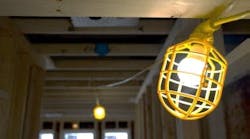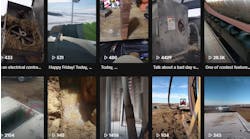29CFR 1926 Subpart M provides the requirements for fall protection. Subpart 1926.502 is the meat of Subpart M. It runs for several pages and covers 11 topics. Now we’ll give three of them a closer look:
(a) General
(b) Guardrail systems
(c) Safety net systems
General
Employers are responsible for providing and installing fall protection for each employee who needs it [1926.502(a)(2)]. Employers must also comply with all the pertinent requirements of Subpart M before that employee can begin the work that requires the fall protection. This means that if something isn’t right, the employee does not proceed. Subpart M has many requirements, but they are organized in a rational way.
Guardrail systems
OSHA has 15 distinct requirements for these. Some highlights are:
- There’s a height requirement for the top edge of the top rails. Generally, it’s 42 in. above the work surface [1926.502(b)(1)].
- Intermediate vertical members (e.g., midrails, screens, mesh, etc.) must run between the top rail and the work surface [1926.502(b)(2)].
- There are two 200-lb tests and one 150-lb test each of these installed systems must meet [1926.502(b)(3), (4), (5)].
- There are three requirements for using guardrails at or around holes [1926.502(b)(11), (12), (13)].
- Guardrail systems used on ramps and runways must be erected along each unprotected side or edge [1926.502(b)(14)].
Safety net systems
OSHA has nine distinct requirements for these. Some highlights:
- Safety nets must be installed as close as practicable to the working surface to reduce the fall distance as much as is practicable [1926.502(c)(1). In no case can they be installed more than 30 ft below the working surface.
- There must be sufficient clearance under the safety net that a person falling into it doesn’t contact the surface under the net [1926.502(c)(3)].
- Safety nets and their installations must be capable of passing the drop test specified in 1926.502(c)(4)(ii).
- Keep the nets clear of scrap, tools, etc. [1926.502(c)(6)].
- Connections between safety net panels must be as strong as integral net components are, and spaced not more than 6 in. apart [1926.502(c)(9)].



